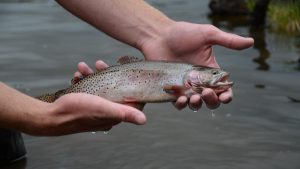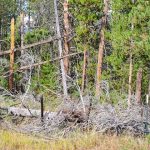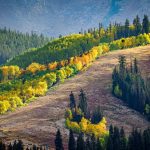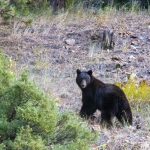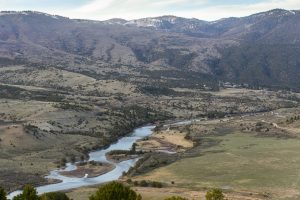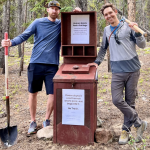Efforts underway to return greenback cutthroat trout to headwaters of Colorado Rivers
Native species to be restocked after brook trout are poisoned away

Kevin Rogers/U.S. Forest Service
13 years ago, Colorado’s state fish could only be found in a single stream in the entire state. Today, a coalition of agencies and experts are working to change that.
The Poudre Headwaters Project is a 10 to 12-year effort led by Rocky Mountain National Park and Colorado Parks and Wildlife, among other organizations, to restore the greenback cutthroat trout to its native waters — about 40 miles of streams in parts of Rocky Mountain National Park and the Arapaho National Forest.
“When it’s all said and done, it’ll be the largest native trout restoration in Colorado,” said Chris Clatterbuck, the natural resource program manager for Rocky Mountain National Park.
For decades, the National Park Service and state fisheries stocked millions of fish, mostly brook trout, in the native waters of the greenbacks. But once brook trout have established themselves in a stream, they will outcompete greenbacks for food and habitat, Clatterbuck said. Restoring native greenbacks requires killing off the non-native brook trout that have long threatened their survival.
To kill the fish, crews must apply the pesticide rotenone to streams with invasive brook trout and other non-natives. Rotenone is a dangerous chemical in high concentrations, but it has been widely used by fisheries for decades and is carefully managed when applied to streams.
The pesticide specifically targets aquatic species, making it the ideal treatment method for fish removal. Consuming rotenone-treated fish is unlikely to poison a mammal, Clatterbuck said.
“It really would take thousands of fish consumed by one osprey or a bear in order to have an effect,” he said.
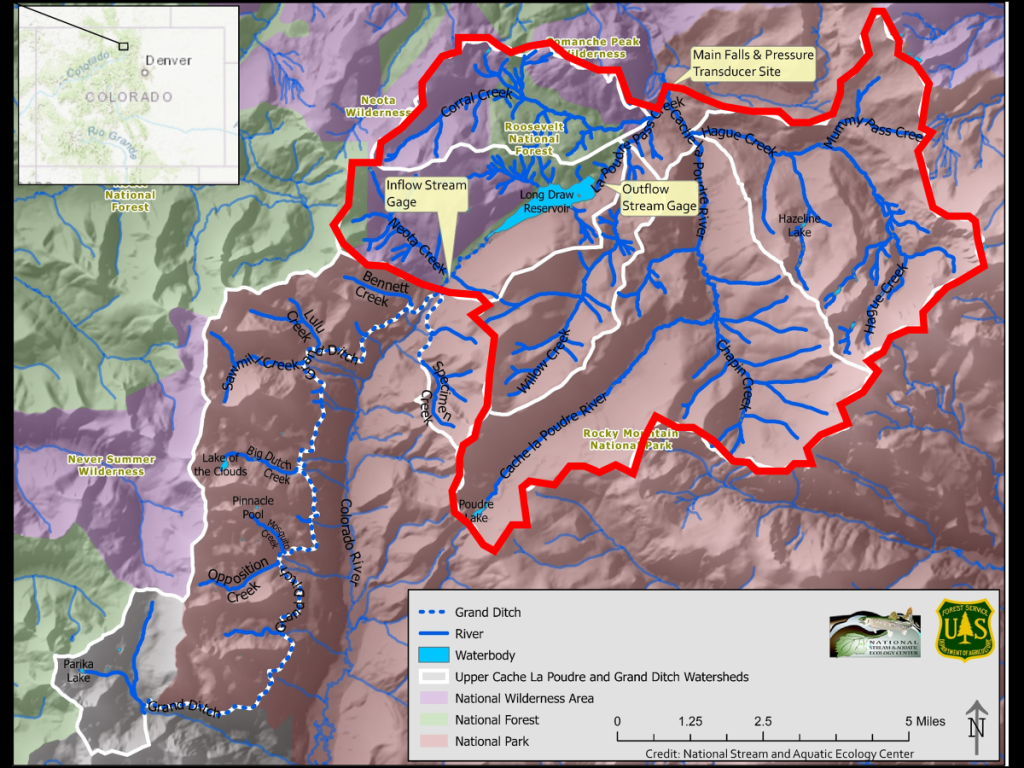
To ensure public safety, some areas in the national park were closed to the public until Aug. 31 during rotenone treatment. While no imminent park closures are expected this summer, Clatterbuck said restoration teams will reinspect the treated areas next summer to determine if another round of rotenone application is necessary to fully eliminate all invasive fish.
Once the areas are confirmed to be free of non-native trout, biologists will reintroduce the native greenback cutthroat trout to its original habitat in the headwaters of the Cache la Poudre River, according to park officials.
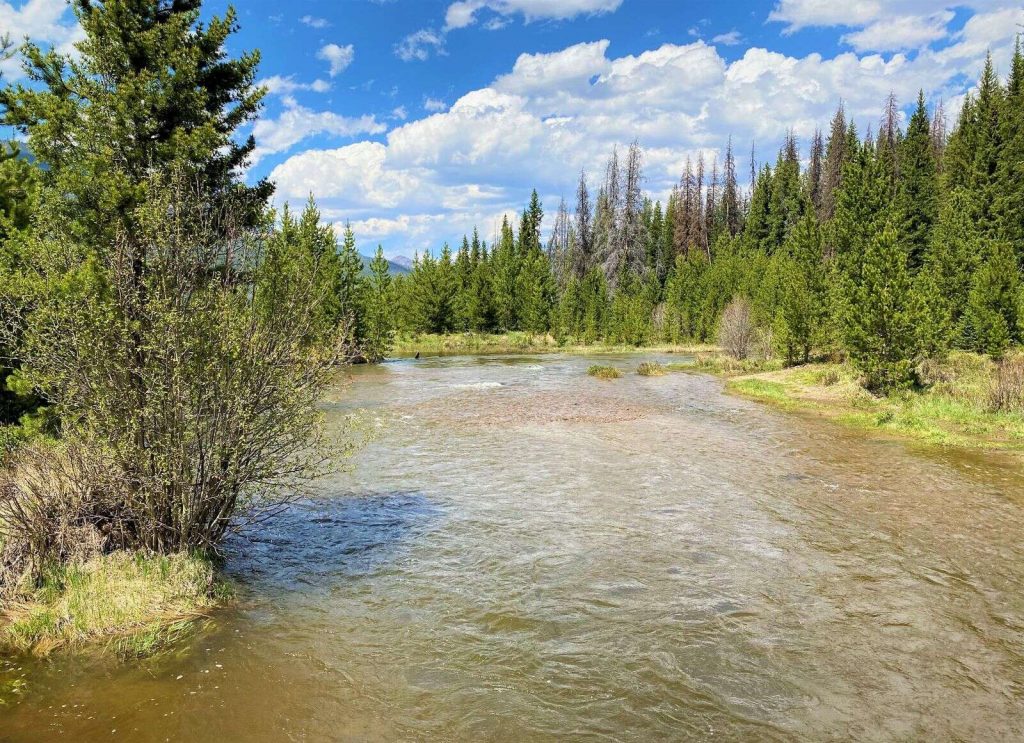
Bringing back native species
Colorado State University Professor Robert Behnke reported that once brook trout gained access to streams, greenback cutthroat trout were virtually gone within five years. In the 1960s, Behnke spearheaded efforts to restore greenback cutthroat trout to streams of their native range east of the Continental Divide.
Since then, fisheries have worked to build fish barriers, often in the form of small dams, near the downstream ends of headwater streams to protect native fish while applying chemicals to kill off brook trout upstream. However, none of these projects have been able to prevent non-native trout invasion long term.
Clatterbuck is hopeful that with time and collaboration, this new restoration project will build a metapopulation, or a network of connected subpopulations that can strengthen the species’ genetic diversity and resilience.
“It’s a long timeline,” he said, but biologists have already started implementing fish barriers at certain locations both within and outside of the national park to segment the watershed and protect greenbacks. “That way, you can tackle different watersheds one by one.”
According to Colorado State University Professor Kurt Fausch, long-term conservation of greenbacks will depend on careful monitoring.
“Ongoing management and research will create and monitor permanent barriers to conserve these unique native trout in a sanctuary that provides flow and temperature regimes that allow them to reproduce and thrive,” he said in a brochure from Rocky Mountain Flycasters.
If successful, the Poudre Headwaters Project could secure a future for native trout in Colorado streams, while also giving anglers “a world class greenback fishery,” Clatterbuck said.
Meanwhile, the Kawuneeche Valley, located a few miles downstream from the headwaters of the Colorado River in Rocky Mountain National Park, is undergoing a similar wetland restoration effort to bring back beavers.
The Kawuneeche Vally Restoration Collaborative includes the National Park Service and other partners who started work this summer on a mission to restore beavers to Kawuneeche Valley. The collaborative has begun work in the valley by building dams, installing fencing and more, but members are hopeful that beavers will enter in to finish the job.
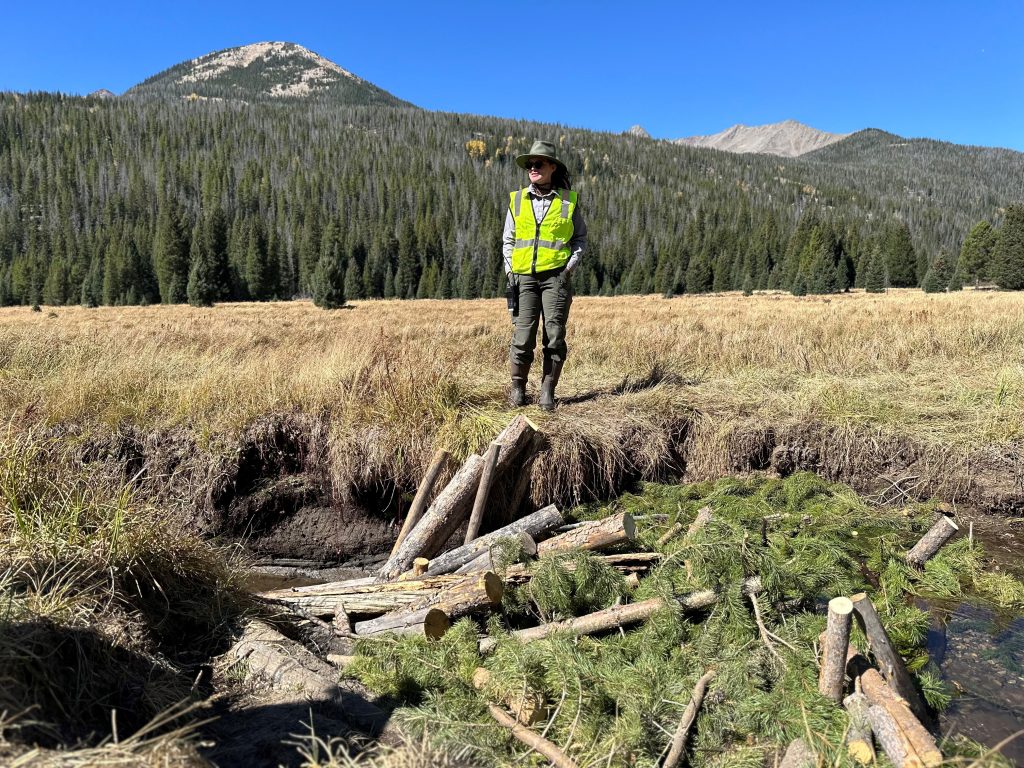

Support Local Journalism

Support Local Journalism
The Sky-Hi News strives to deliver powerful stories that spark emotion and focus on the place we live.
Over the past year, contributions from readers like you helped to fund some of our most important reporting, including coverage of the East Troublesome Fire.
If you value local journalism, consider making a contribution to our newsroom in support of the work we do.

